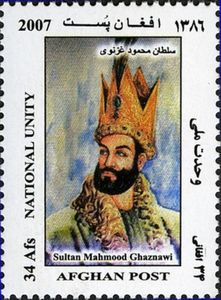Tarikh-i-Khan Jahan Lodi, Translated from the Urdu version by Muhammad Bashir Husain, second edition, Lahore, 1986, pp. 121-22. In Goel S.R. Hindu temples What Happened to them. Tarikh-i-Khan Jahani wa Makhzan-i-Afghani of Khwajah Niamatallah Harwi, translated into Urdu by Muhammad Bashir Husain, second edition, Lahore, 1986.
Quotes from Muslim medieval histories
Mahmúd z Ghazní: Citáty v angličtine
Tarikh-i-Firishta, translated by John Briggs under the title History of the Rise of the Mahomedan Power in India, first published in 1829, New Delhi Reprint 1981, Vol. I, pp. 27-37.
Quotes from Muslim medieval histories
Siraswa
Elliot and Dowson, Vol. II : Elliot and Dowson, History of India as told by its own Historians, 8 Volumes, Allahabad Reprint, 1964. p. 47
Quotes from Tarikh Yamini (Kitabu-l Yamini) by Al Utbi
E.C. Sachau (tr.), Alberuni's India, New Delhi Reprint, 1983, p. 102-103
Quotes from Muslim medieval histories
Mathura (Uttar Pradesh), Kanauj (Uttar Pradesh). Habibu’s-Siyar in Elliot and Dowson, Vol. IV : Elliot and Dowson, History of India as told by its own Historians, 8 Volumes, Allahabad Reprint, 1964. p. 178-80
Quotes from The History of India as told by its own Historians
Somnath (Gujarat) . Habibu’s-Siyar, in Elliot and Dowson, Vol. IV : Elliot and Dowson, History of India as told by its own Historians, 8 Volumes, Allahabad Reprint, 1964. p. 182-83
Quotes from The History of India as told by its own Historians
Tarikh-i-Firishta, translated by John Briggs under the title History of the Rise of the Mahomedan Power in India, first published in 1829, New Delhi Reprint 1981, Vol. I, pp. 27-37.
Quotes from Muslim medieval histories
AH 416. He ordered the upper part to be broken and the remainder to be transported to his residence, Ghaznin, with all its coverings and trappings of gold, jewels, and embroidered garments. Part of it has been thrown into the hippodrome of the town, together with the Cakrasvamin, an idol of bronze, that had been brought from Taneshar. Another part of the idol from Somanath lies before the door of the mosque of Ghaznin, on which people rub their feet to clean them from dirt and wet.
E.C. Sachau (tr.), Alberuni's India, New Delhi Reprint, 1983, p. 102-103
Sack of Somnath (1025 CE)
“Islam or death was the alternative he placed before people.”
Quotes from Tarikh Yamini (Kitabu-l Yamini) by Al Utbi
Zdroj: in SR Sharma, Studies in Medieval Indian history quoted in Misra, R. G. (2005). Indian resistance to early Muslim invaders up to 1206 A.D. p.113
